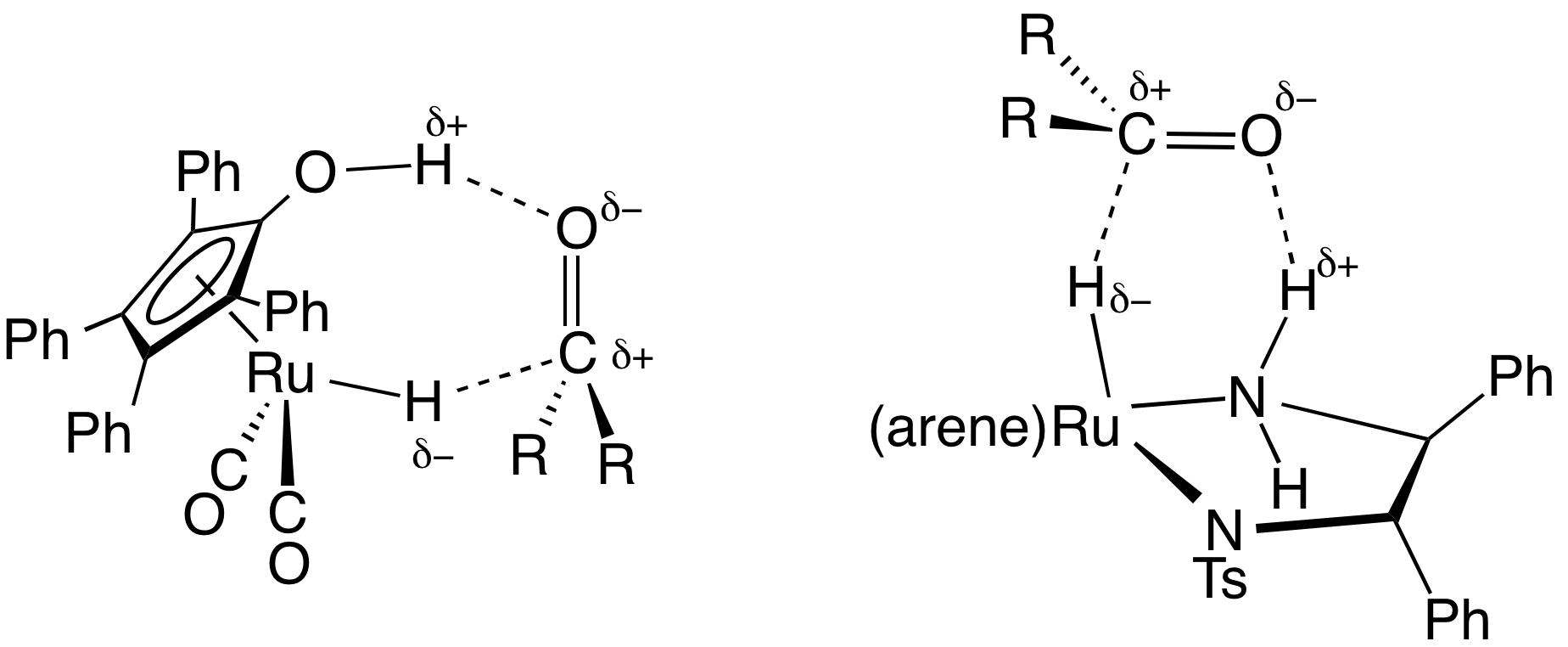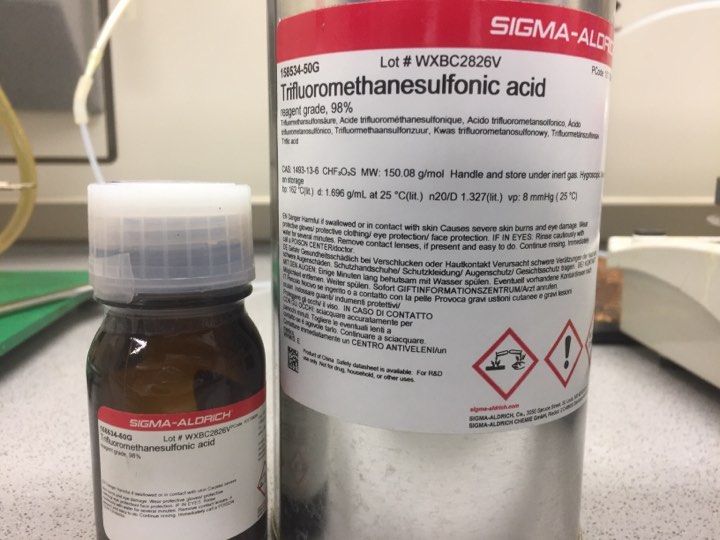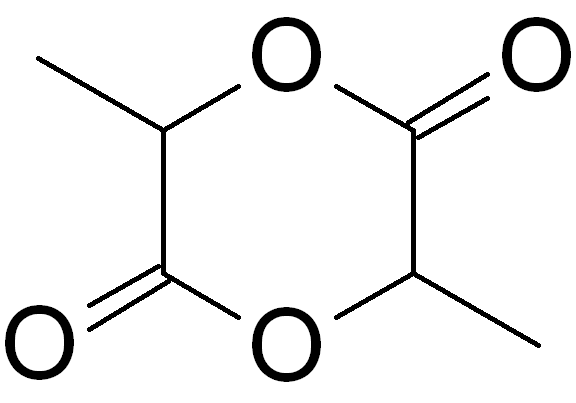|
Ionic Hydrogenations
Ionic hydrogenation refers to hydrogenation achieved by the addition of a hydride to substrate that has been activated by an electrophile. Some ionic hydrogenations entail addition of H2 to the substrate and some entail replacement of a heteroatom with hydride. Traditionally, the method was developed for acid-induced reductions with hydrosilanes. Alternatively ionic hydrogenation can be achieved using H2. Bullock, R. M. "Ionic Hydrogenations," in The Handbook of Homogeneous Hydrogenation (eds J. G. de Vries and C. J. Elsevier), Wiley-VCH Verlag GmbH, Weinheim, Germany, 2007. Ionic hydrogenation is employed when the substrate can produce a stable carbonium ion. Polar double bonds are favored substrates. Using hydrosilanes Because silicon (1.90) is more electropositive than hydrogen (2.20), hydrosilanes exhibit (mild) hydridic character. Hydrosilanes can serve as hydride donors to highly electrophilic organic substrates. Many alcohols, alkyl halides, acetals, orthoesters, alkenes, ... [...More Info...] [...Related Items...] OR: [Wikipedia] [Google] [Baidu] |
Hydrogenation
Hydrogenation is a chemical reaction between molecular hydrogen (H2) and another compound or element, usually in the presence of a Catalysis, catalyst such as nickel, palladium or platinum. The process is commonly employed to redox, reduce or Saturated and unsaturated compounds, saturate organic compounds. Hydrogenation typically constitutes the addition of pairs of hydrogen atoms to a molecule, often an alkene. Catalysts are required for the reaction to be usable; non-catalytic hydrogenation takes place only at very high temperatures. Hydrogenation reduces Double bond, double and Triple bond, triple bonds in hydrocarbons. Process Hydrogenation has three components, the Saturated and unsaturated compounds, unsaturated substrate, the hydrogen (or hydrogen source) and, invariably, a catalyst. The redox, reduction reaction is carried out at different temperatures and pressures depending upon the substrate and the activity of the catalyst. Related or competing reactions The same ca ... [...More Info...] [...Related Items...] OR: [Wikipedia] [Google] [Baidu] |
Silanes
Silanes refers to diverse kinds of charge-neutral silicon compounds with the formula . The R substituents can any combination of organic or inorganic groups. Most silanes contain Si-C bonds, and are discussed under organosilicon compounds. Examples: *Silane , the parent. *Binary silicon-hydrogen compounds (which are sometimes called silanes also) includes silane itself but also compounds with Si-Si bonds including disilane and longer chains. *Silanes with one, two, three, or four Si-H bonds are called hydrosilanes. Silane itself is the parent member. Examples: triethylsilane () and triethoxysilane (). *Polysilanes are organosilicon compounds with the formula . They include all binary silicon-hydrogen compounds except the parent, although these tend to be less useful because they are fragile. Attracting more interest, are the organic derivatives such as polydimethylsilane and dodecamethylcyclohexasilane *Chlorosilanes have Si-Cl bonds. Examples: trichlorosilane () and tetrachlo ... [...More Info...] [...Related Items...] OR: [Wikipedia] [Google] [Baidu] |
Transfer Hydrogenation
In chemistry, transfer hydrogenation is a chemical reaction involving the addition of hydrogen to a compound from a source other than molecular . It is applied in laboratory and industrial organic synthesis to saturate organic compounds and reduce ketones to alcohols, and imines to amines. It avoids the need for high-pressure molecular used in conventional hydrogenation. Transfer hydrogenation usually occurs at mild temperature and pressure conditions using organic or organometallic catalysts, many of which are chiral, allowing efficient asymmetric synthesis. It uses hydrogen donor compounds such as formic acid, isopropanol or dihydroanthracene, dehydrogenating them to , acetone, or anthracene respectively. Often, the donor molecules also function as solvents for the reaction. A large scale application of transfer hydrogenation is coal liquefaction using "donor solvents" such as tetralin. Organometallic catalysts In the area of organic synthesis, a useful family of hydrogen-trans ... [...More Info...] [...Related Items...] OR: [Wikipedia] [Google] [Baidu] |
Olefin
In organic chemistry, an alkene is a hydrocarbon containing a carbon–carbon double bond. Alkene is often used as synonym of olefin, that is, any hydrocarbon containing one or more double bonds.H. Stephen Stoker (2015): General, Organic, and Biological Chemistry'. 1232 pages. Two general types of monoalkenes are distinguished: terminal and internal. Also called α-olefins, terminal alkenes are more useful. However, the International Union of Pure and Applied Chemistry (IUPAC) recommends using the name "alkene" only for acyclic hydrocarbons with just one double bond; alkadiene, alkatriene, etc., or polyene for acyclic hydrocarbons with two or more double bonds; cycloalkene, cycloalkadiene, etc. for cyclic ones; and "olefin" for the general class – cyclic or acyclic, with one or more double bonds. Acyclic alkenes, with only one double bond and no other functional groups (also known as mono-enes) form a homologous series of hydrocarbons with the general formula with ''n ... [...More Info...] [...Related Items...] OR: [Wikipedia] [Google] [Baidu] |
Benzophenone
Benzophenone is the organic compound with the formula (C6H5)2CO, generally abbreviated Ph2CO. It is a white solid that is soluble in organic solvents. Benzophenone is a widely used building block in organic chemistry, being the parent diarylketone. Uses Benzophenone can be used as a photo initiator in UV(Ultra-violet)-curing applications such as inks, imaging, and clear coatings in the printing industry. Benzophenone prevents ultraviolet ( UV) light from damaging scents and colors in products such as perfumes and soaps. Benzophenone can also be added to plastic packaging as a UV blocker to prevent photo-degradation of the packaging polymers or its contents. Its use allows manufacturers to package the product in clear glass or plastic (such as a PETE water bottle). Without it, opaque or dark packaging would be required. In biological applications, benzophenones have been used extensively as photophysical probes to identify and map peptide–protein interactions. Benzophenone ... [...More Info...] [...Related Items...] OR: [Wikipedia] [Google] [Baidu] |
Acidity
In computer science, ACID ( atomicity, consistency, isolation, durability) is a set of properties of database transactions intended to guarantee data validity despite errors, power failures, and other mishaps. In the context of databases, a sequence of database operations that satisfies the ACID properties (which can be perceived as a single logical operation on the data) is called a ''transaction''. For example, a transfer of funds from one bank account to another, even involving multiple changes such as debiting one account and crediting another, is a single transaction. In 1983, Andreas Reuter and Theo Härder coined the acronym ''ACID'', building on earlier work by Jim Gray who named atomicity, consistency, and durability, but not isolation, when characterizing the transaction concept. These four properties are the major guarantees of the transaction paradigm, which has influenced many aspects of development in database systems. According to Gray and Reuter, the IBM Informa ... [...More Info...] [...Related Items...] OR: [Wikipedia] [Google] [Baidu] |
Transition Metal Hydride
Transition metal hydrides are chemical compounds containing a transition metal bonded to hydrogen. Most transition metals form hydride complexes and some are significant in various catalytic and synthetic reactions. The term "hydride" is used loosely: some of them are acidic (e.g., H2Fe(CO)4), whereas some others are hydridic, having H−-like character (e.g., ZnH2). Classes of metal hydrides Binary metal hydrides Many transition metals form compounds with hydrogen, called binary hydrides: binary, because these compounds contain only two elements, and hydride, because the hydrogenic ligand is assumed to have hydridic (H−-like) character. These compounds are invariably insoluble in all solvents, reflecting their polymeric structures. They often exhibit metal-like electrical conductivity. Many are nonstoichiometric compounds. Electropositive metals ( Ti, Zr, Hf, Zn) and some other metals form hydrides with the stoichiometry MH or sometimes MH2 (M = Ti, Zr, Hf, V, Zn). The b ... [...More Info...] [...Related Items...] OR: [Wikipedia] [Google] [Baidu] |
Triflic Acid
Triflic acid, the short name for trifluoromethanesulfonic acid, TFMS, TFSA, HOTf or TfOH, is a sulfonic acid with the chemical formula CF3SO3H. It is one of the strongest known acids. Triflic acid is mainly used in research as a catalyst for esterification. It is a hygroscopic, colorless, slightly viscous liquid and is soluble in polar solvents. Synthesis Trifluoromethanesulfonic acid is produced industrially by electrochemical fluorination (ECF) of methanesulfonic acid: : CH3SO3H + 4 HF ->CF3SO2F + H2O + 3 H2 The resulting CF3SO2F is hydrolyzed, and the resulting triflate salt is reprotonated. Alternatively, trifluoromethanesulfonic acid arises by oxidation of trifluoromethyl sulfenyl chloride: :CF3SCl + 2 Cl2 + 3 H2O -> CF3SO3H + 5 HCl Triflic acid is purified by distillation from triflic anhydride. Historical Trifluoromethanesulfonic acid was first synthesized in 1954 by Robert Haszeldine and Kidd by the following reaction: : Reactions As an acid In the laboratory, trifl ... [...More Info...] [...Related Items...] OR: [Wikipedia] [Google] [Baidu] |
Trifluoroacetic Acid
Trifluoroacetic acid (TFA) is an organofluorine compound with the chemical formula CF3CO2H. It is a structural analogue of acetic acid with all three of the acetyl group's hydrogen atoms replaced by fluorine atoms and is a colorless liquid with a vinegar-like odor. TFA is a stronger acid than acetic acid, having an acid ionisation constant, ''K''a, that is approximately 34,000 times higher, as the highly electronegative fluorine atoms and consequent electron-withdrawing nature of the trifluoromethyl group weakens the oxygen-hydrogen bond (allowing for greater acidity) and stabilises the anionic conjugate base. TFA is widely used in organic chemistry for various purposes. Synthesis TFA is prepared industrially by the electrofluorination of acetyl chloride or acetic anhydride, followed by hydrolysis of the resulting trifluoroacetyl fluoride: : + 4 → + 3 + : + → + Where desired, this compound may be dried by addition of trifluoroacetic anhydride. An older route to ... [...More Info...] [...Related Items...] OR: [Wikipedia] [Google] [Baidu] |
Triethylsilane
Triethylsilane is the organosilicon compound with the formula (C2H5)3SiH. It is a trialkylsilane. The Si-H bond is reactive. This colorless liquid is used in organic synthesis as a reducing agent and as a precursor to silyl ethers. As one of the simplest trialkylsilanes that is a liquid at room temperature, triethylsilane is often used in studies of hydrosilylation Hydrosilylation, also called catalytic hydrosilation, describes the addition of Si-H bonds across unsaturated bonds."Hydrosilylation A Comprehensive Review on Recent Advances" B. Marciniec (ed.), Advances in Silicon Science, Springer Science, 2009 ... catalysis. Additional reading * * * * References {{Reflist Reducing agents Carbosilanes ... [...More Info...] [...Related Items...] OR: [Wikipedia] [Google] [Baidu] |
Green Chemistry
Green chemistry, also called sustainable chemistry, is an area of chemistry and chemical engineering focused on the design of products and processes that minimize or eliminate the use and generation of hazardous substances. While environmental chemistry focuses on the effects of polluting chemicals on nature, green chemistry focuses on the environmental impact of chemistry, including lowering consumption of nonrenewable resources and technological approaches for preventing pollution. The overarching goals of green chemistry—namely, more resource-efficient and inherently safer design of molecules, materials, products, and processes—can be pursued in a wide range of contexts. History Green chemistry emerged from a variety of existing ideas and research efforts (such as atom economy and catalysis) in the period leading up to the 1990s, in the context of increasing attention to problems of chemical pollution and resource depletion. The development of green chemistry in Europe a ... [...More Info...] [...Related Items...] OR: [Wikipedia] [Google] [Baidu] |
Hydrosilane
Hydrosilanes are tetravalent silicon compounds containing one or more Si-H bond. The parent hydrosilane is silane (SiH4). Commonly, hydrosilane refers to organosilicon derivatives. Examples include phenylsilane (PhSiH3) and triethoxysilane ((C2H5O)3SiH). Polymers and oligomers terminated with hydrosilanes are resins that are used to make useful materials like caulks. Synthesis Trichlorosilane is produced commercially by the reaction of hydrogen chloride with silicon: :Si + 3 HCl → HSiCl3 + H2 Many alkoxy hydrosilanes are generated by alcoholysis of trichlorosilane. One example is triethoxysilane: :HSiCl3 + 3EtOH → HSi(OEt)3 + 3 HCl Organohydrosilanes can be prepared by partial hydrosilation of silane itself: :SiH4 + 3 C2H4 → HSi(C2H5)3 In the laboratory, hydrosilanes classically are prepared by treating chlorosilanes with hydride reagents, such as lithium aluminium hydride: :4ClSi(C2H5)3 + LiAlH4 → 4HSi(C2H5)3 + LiAlCl4 Structure The silicon-to-hydrogen bond is longer ... [...More Info...] [...Related Items...] OR: [Wikipedia] [Google] [Baidu] |







